#GIG tijuana
Explore tagged Tumblr posts
Text
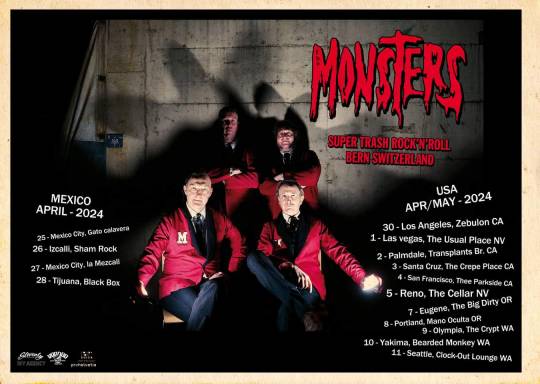
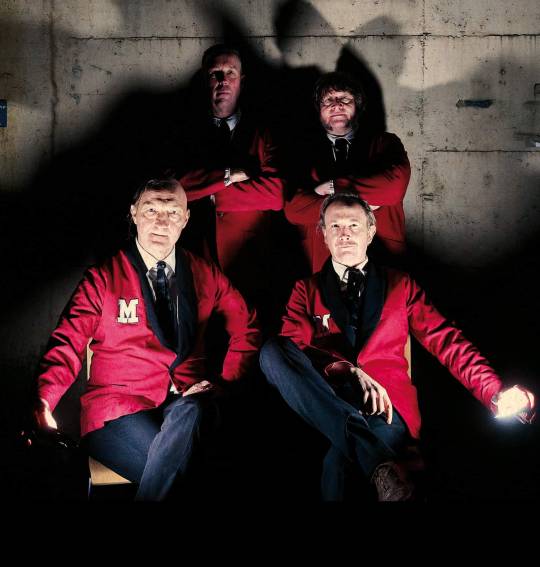

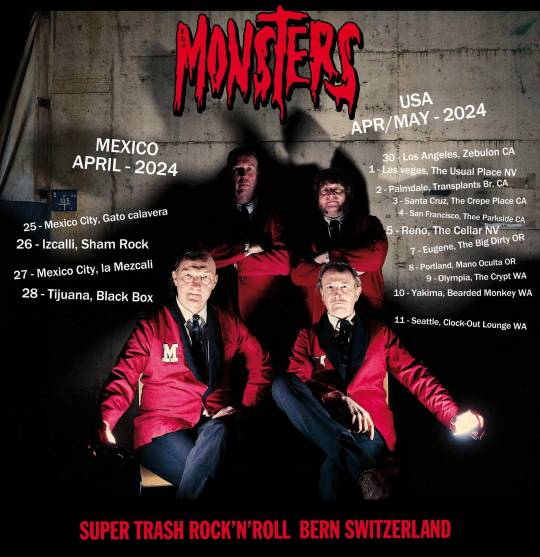
THE MONSTERS - Mexico and the USA - 2024
THE PURE 1 RIFF GARAGE TRASH MASSACRE CONTINUES!! DIRECT FROM BERN SWITZERLAND WILD SUPER RAW PUNK PRIMITIVE ROCK’N’ROLL
April 25 - Mexico City, Gato calavera MEX
April 26 - Izcalli, Sham Rock MEX
April 27 - Mexico City, la Mezcali MEX
April 28 - Tijuana, Black Box MEX
April 30 - Los Angeles, Zebulon CA USA
May 1 - Las vegas, The Usual Place NV USA
May 2 - Palmdale, Transplants Brewing Co CA USA
May 3 - Santa Cruz, The Crepe Place CA USA
May 4 - San Francisco, Thee Parkside CA USA
May 5 - Reno, The Cellar NV USA
May 7 - Eugene, The Big Dirty OR USA
May 8 - Portland, Mano Oculta OR USA
May 9 - Olympia, The Crypt WA USA
May 10 - Yakima, Bearded Monkey WA USA
May 11 - Seattle, Clock-Out Lounge WA USA
LINE UP
Beat-Man -Guitars/Vocals
Janosh -Bass
Swan Lee -Drum
Pumi - the knobs
the Monsters: www.themonsters.ch
voodoo rhythm records: www.voodoorhythm.com
slovenly: www.slovenly.com
slovenly Mexico: https://www.facebook.com/SlovenlyMexico/
Ivy Agency: www.ivyagencyworldwide.com
Discos De Muerte: https://www.instagram.com/discosdemuerte
Born to be Cheap: https://www.instagram.com/borntobecheapmx/
pøj pøj Slovenly Recordings Voodoo Rhythm Records (official)
Ivy Agency
@pojpojberlin @slovenlyrecordings @voodoo_rhythm_records
@ivyagencyworldwide @slovenlymexico @borntobecheapmx @matt_b_hutchison
@slovenlymexico @zebulonla @theusualplacelv @dirtyrockroll @transplantsbrewing @transplantsvenue @thecrepeplace @theeparkside @thecellarstage @thebigdirty.live @manoocultapdx @takewarningpresents @the_crypt_olympia @capcitypresents @beardedmonkeymusic @clockoutlounge @voodoo_rhythm_records #ivyagency #adventuresinbooking #switzerland
#the monsters#mexico city#los angeles#reno#las vegas#san francisco#tijuana#poster#gig poster#switzerland#bern
0 notes
Text
ARCH ENEMY's ALISSA WHITE-GLUZ Opens Up About Health Scare During Mexican Tour: 'This Is The Most Pain I Have Ever Experienced'

Alissa White-Gluz has apologized to ARCH ENEMY fans for not being able to perform up to her usual high standards during the band's ongoing Mexican tour.
The 39-year-old Canadian-born singer took to her social media on Sunday (December 8) to write: "Mexico - I [love] you! I am seriously blown away by this country. The nature is diverse and gorgeous; the people are warm, friendly, funny, creative and welcoming; the history is fascinating; the architecture is jaw-dropping; the rich culture of music and art is full of colour and beauty; the food is incredible (every city is like a vegan paradise)… I could go on.
"Thank you so much for your understanding and well-wishes. I feel extremely guilty that I cannot give a normal show because you guys absolutely deserve it. I insisted that we should reschedule but that was apparently not possible.
"This might be TMI [too much information] but since the news is out already I just want these amazing fans in Mexico to know how serious this was and that it absolutely is killing me to not be able to give you 100%.
"Trust me - I have broken my ribs on stage and not missed a show, I have performed through bronchitis, complete laryngitis that took months to heal — everything. This is different.
"I had a doctor come to my hotel bed two days in a row and she said 'she is experiencing a total collapse.' My body is so exhausted that I have a hard time walking. I'm confused. Dizzy. Shaking.
"A bacterial infection lodged in my ears and then aggressively spread to all the soft tissues of my upper body. Ears, eyes, throat, lungs, nose… I had pus leaking out of my EYES. Blood leaking out of my nose. I was freezing and sweating simultaneously and had a fever of 102F for over a week. And yes, I did several shows in this state. I was going into shock. It was an infection that was probably lingering for a long time and finally started winning — my body was losing and it was happening quickly. I think if I didn't get the antibiotics when I did I would be hospitalized or dead right now. I have never experienced a more scary medical situation before in my life. This is also the most pain I have ever experienced and I have a very high pain tolerance (like most women).
"I can feel the love from you guys and it is honestly helping me heal. Thank you for your smiling faces in the crowd — they really do cheer me up.
"It will be several weeks or months before I fully recover but when I do — I am demanding that we come back here so I can give you guys the best concert of your lives. Seriously — I have fallen in love with you, Mexico, and I WILL be back to give you 1000% AWG."
ARCH ENEMY played a full set without White-Gluz on December 3 at El Foro Jai Alai in Tijuana, Mexico after the singer became "very sick" and was unable to join her bandmates at the gig.
ARCH ENEMY's Tijuana performance was part of the group's 18-date tour of Mexico, which launched on November 12 in Toluca and is scheduled to wrap on December 11 in Mexico City.
White-Gluz, former vocalist of Canadian extreme metallers THE AGONIST, joined ARCH ENEMY in 2014 as the replacement for Angela Gossow. Angela, who joined ARCH ENEMY in 2000 and made her debut on the now classic "Wages Of Sin" (2001),stepped down as frontwoman and is now focusing on management, while Alissa took her place.
ARCH ENEMY's new album, "Blood Dynasty", is slated for release on March 28, 2025 via Century Media Records.
The band has released three songs so far from "Blood Dynasty": "Dream Stealer" in July, "Liars & Thieves" in October, and the title track, "Blood Dynasty", in December.
"Dream Stealer" marked ARCH ENEMY's first new music since the release of the "Deceivers" album, which came out in August 2022.
"Dream Stealer" was mixed by Jens Bogren and mastered by Tony Lindgren at Fascination Street Studios.
ARCH ENEMY played its first concert with new guitarist Joey Concepcion on April 24 at Musinsa Garage in Seoul, South Korea. The show was part of ARCH ENEMY's 2024 Asian tour.
In December 2023, ARCH ENEMY announced that it had "amicably" parted ways with longtime guitarist Jeff Loomis.
Jeff, who was the main songwriter in his previous group, NEVERMORE, joined ARCH ENEMY in late 2014, but was not involved in the writing for the latter act's last two albums, 2017's "Will To Power" and the aforementioned "Deceivers".
16 notes
·
View notes
Text
..x cierto..solo 2 semanas después de ver a KYLIE MINOGUE en el HAMMERSTEIN BALLROOM [en su 1era gira USA tras 20 años de carrera y tras haberla visto 3_10_09 en el PEARL TEATHER del Hotel CASINO THE PALMS de LAS VEGAS donde al salir vi en the Gossy ROOM al gemelo de BROS MAtt GOss q en su cd THE TIME dedica Sister a su hermana fallecida y espectaculo permanente que luego traslado al CAESAR PALACE ]..donde entre gracias a q un REVENTA me vendió una entrada a 1/2 de precio pues ya había empezado y además consiguió q pasara con mochila y la guitarra q compre el día después de mi 37 cumple [28_11_08] q vi a OASIS [antes THE RAIN] en el VICENTE FDEZ ARENA de GUADALAJARA..pues se la compre a un tipo q la vendía x la calle junto a un grafitti de JIMMY HENDRIX con lema LA LEYENDA NUNCA MUERE, SE TRANSFORMA y x la noche vi a JAGUARES en la CONCHA ACUSTICA presentar cd 45 [x la edad de su cantante SAUL, ex_CAIFANES y los millones de pobres de MEXICO]..vi también en el HAMMERSTEIN BALLROOM a THE AUSTRALIAN PINK FLOYD y lo q más me impresionó fue sus 2 cantantes cuando cantaban THE GREAT GIG in the SKY q es sobre la muerte de alguien
X cierto..la Guitarra [con una funda de camuflaje q compre en TIJUANA donde me hospede junto al CRISTO DE LOS ALAMOS rodeado de ANGELES CON TROMPETA..camino de cruzar la frontera de SAN ISYDRO=Patrón de MADRID=15_MAYO..para ir a SAN DI_EGO y luego tras dormir en el hotel PADRE TRAIL INN coger el TREN UNION PACIFIC en Estacion SANTA FE para ir a los ANGELES y luego a LAS VEGAS]..la ondee al REVES o como una BANDERA para ver si me veía KYLIE MINOGUE y dijo I CAN SEE YOU
youtube







0 notes
Link
youtube

#la rioja tijuana#la rioja residencial#la rioja residencial tijuana#la rioja tijuana precios#la rioja tijuana ubicacion#gig desarrollos#gig tijuana#coto bahia#coto 5#coto pedregal#casas en venta en tijuana#venta de casas en tijuana#colinas de california#tlajomulco la rioja#la rioja tlajomulco#la rioja tijuana departamentos#fraccionamiento la rioja tijuana#armando gomez flores#bonaterra tijuana#tijuana casas#coto bahia tijuana#fraccionamiento la rioja residencial tijuana#fraccionamiento residencial la rioja#rioja tijuana#la rioja#la rioja guadalajara#la moraleja guadalajara#colinas de california tijuana
1 note
·
View note
Text

Tequila! ‼️🥃🥊💀🔜☠️🍋🔥🥃💪🏽(silkscreen on paper)🌵💀🔥
#contemporary art#pop art#fine art#folk art#gig poster#poster design#poster art#printmaking#silkscreen#tijuana#jalisco#agaveazul#blue agave#blue agave cactus arizona#agaveplant#agave#agavespirits#agave nectar#agavelove#mezcal#distillery#bartender#tequila shots#tequila sunrise#tequila#margaritas#skulls#bullriding#cattle#mixology
3 notes
·
View notes
Photo




Sixth June live in Tijuana Mx . 20th Octuber
6 notes
·
View notes
Text

The 40th Anniversary Tour😜🤘
The following dates have already been announced for the tour:
Madrid, Spain 🇪🇸 - 30th December
Monterrey, Mexico 🇲🇽 - 08th March
CDMX, Mexico 🇲🇽 - 11th March
Querétaro, Mexico 🇲🇽 - 15th March
Puebla, Mexico 🇲🇽 - 16th March
Tijuana, Mexico 🇲🇽 - 18th March
Bogotá, Colombia 🇨🇴 - 15th April
Caracas, Venezuela 🇻🇪 - 18th April
Lima, Peru 🇵🇪 - 09th June
Arequipa, Peru 🇵🇪 - 10th June
Santiago, Chile 🇨🇱 - 13th June
Are you going to any of these gigs? 🤔
It’s something you definitely don’t want to miss!!
2 notes
·
View notes
Note
That RPF answer was awesome. I'd really love to hear more about the Tijuana Bibles, please?
*breaks knuckles* Time to ramble about junk again, boys.
Tijuana Bibles are little booklets, usually made in the 20s-60s, but some ppl still make them for fun or as art. They're mostly smut, but also have humor, political messages, inappropriate themes, etc. Some of the characters are OCs, some are comic/cartoon characters, and some are well-known figures, like actors. They were illegal, made anonymously, and sold in secret.
They were called Tijuana Bibles to imply that they were smuggled from Mexico. (In line with "Tijuana donkey shows," which also weren't a real thing.) They were also called a lot of other things, like eight-pagers and bluesies. They were sold under the counter or out of ppl's pockets. Organized crime was sometimes blamed, but it's more likely that most printers had presses for making labels and just switched to Bibles as a side gig.
What's important about them - other than the rpf angle - is that they were subversive "low-brow" art, made by regular ppl, for regular ppl. Though they absolutely did make money, they weren't marketable. The art wasn't expected to be consistent, so while some artists were actual pros *cough*Wesley Morse*cough* most of them weren't. The stories were meant to entertain, not to be classics. The creators were diverse (well, more diverse than in commercial products) bc they didn't have to fit any standard. There was no standard. Bibles were trash. Delightful trash, by the ppl, for the ppl.
They're considered by many to be some of the earliest comix, and I agree. Comix - underground comic books that gave a voice to social movement groups, women, the queer community, and other minorities - circumvented the rules for comics via self-publishing and clandestine distributing. If you ask me, and you did lol, that's a significant part of the heritage of fanfic/art as we know it now. Our beautiful mix of voices that would never otherwise be heard, speaking truth and entertaining our small but important audiences.
Going back to the Bibles specifically, the fact that they used various interpretations of beloved characters mixed with OCs makes them fanfic/art. They're tangible proof that we're wired to be inspired (can I get that on a pillow?) and to imagine so much more for the characters we love. They're a historical example of the fact that transformative art doesn't erode the source material, as they had little to no impact on the inspiration.
And they're proof that commercial art, while very valuable, isn't a barometer for our needs or wants. The secret art that we make for each other has always been sexual, dark, humorous, imperfect, gross, bizarre, and free. It embodies the things we aren't getting from "appropriate" media. It's where we find our niche content that no one can afford to publicly endorse. It's our own little world where we escape being told what to look at, and make what we want to look at.
It's also Mae West fucking Popeye. And I think that's beautiful.
28 notes
·
View notes
Text

My very first DJ gig in August, 2000 at Marko Disco in Tijuana. (me in green)
I would open the night and open the shows for Nortec
13 notes
·
View notes
Text
Whenever I visit Olvera Street, as I did a couple of weeks ago, my walk through the historic corridor is always the same.
Start at the plaza. Pass the stand where out-of-towners and politicians have donned sombreros and serapes for photos ever since the city turned this area into a tourist trap in 1930.
Look at the vendor stalls. Wonder if I need a new guayabera. Gobble up two beef taquitos bathed in avocado salsa at Cielito Lindo. Then return to my car and go home.
I’ve done this walk as a kid, and as an adult. For food crawls and quick lunches. With grad students on field trips, and with the late Anthony Bourdain for an episode of his “Parts Unknown.”
This last visit was different, though: I had my own camera crew with me.
My last chance at Hollywood fame was going to live or die on Olvera Street.
I was shooting a sizzle reel — footage that a producer will turn into a clip for television executives to determine whether I’m worthy of a show. In this case, I want to turn my 2012 book “Taco USA: How Mexican Food Conquered America” into the next “Diners, Drive-Ins, and Dives.” Or ��Somebody Feed Phil.” Or an Alton Brown ripoff. Or a TikTok series.
Anything at this point, really.
For more than a decade, I’ve tried to break into Hollywood with some success — but the experience has left me cynical. Personal experience and the historical record have taught me that studios and streamers still want Mexicans to stay in the same cinematic lane that American film has paved for more than a century. We’re forever labeled… something. Exotic. Dangerous. Weighed down with problems. Never fully developed, autonomous humans. Always “Mexican.”
Even if we’re natives of Southern California. Especially if we’re natives of Southern California.
I hope my sizzle reel will lead to something different. I doubt it will because the issue is systemic. Industry executives, producers, directors and scriptwriters can only portray the Mexicans they know — and in a perverse, self-fulfilling prophecy, they mostly only know the Mexicans their industry depicts even in a region where Latinos make up nearly half the population.
The vicious cycle even infects creators like me.
As the film crew and I left for our next location, I stopped and looked around. We were right where I began, except I now looked south on Main Street. The plaza was to my left. City Hall loomed on the horizon. The vista was the same as the opening scene of “Bordertown,” a 1935 Warner Bros. film I had seen the night before. It was the first Hollywood movie to address modern-day Mexican Americans in Los Angeles.
What I saw was more than déjà vu. It was a reminder that 86 years later, Hollywood’s Mexican problem hasn’t really progressed at all.
Birth of a stereotype
Screen misrepresentation of Mexicans isn’t just a longstanding wrong; it’s an original sin. And it has an unsurprising Adam: D.W. Griffith.
He’s most infamous for reawakening the Ku Klux Klan with his 1915 epic “The Birth of a Nation.” Far less examined is how Griffith’s earliest works also helped give American filmmakers a language with which to typecast Mexicans.
Two of his first six films were so-called “greaser” movies, one-reelers where Mexican Americans were racialized as inherently criminal and played by white people. His 1908 effort “The Greaser’s Gauntlet” is the earliest film to use the slur in its title. Griffith filmed at least eight greaser movies on the East Coast before heading to Southern California in early 1910 for better weather.
The new setting allowed Griffith to double down on his Mexican obsession. He used the San Gabriel and San Juan Capistrano missions as backdrops for melodramas embossed with the Spanish Fantasy Heritage, the white California myth that romanticized the state’s Mexican past even as it discriminated against the Mexicans of the present.
In films such as his 1910 shorts “The Thread of Destiny,” “In Old California” (the first movie shot in what would become Hollywood) and “The Two Brothers,” Griffith codified cinematic Mexican characters and themes that persist. The reprobate father. The saintly mother. The wayward son. The idea that Mexicans are forever doomed because they’re, well, Mexicans.
Griffith based his plots not on how modern-day Mexicans actually lived, but rather on how white people thought they did.
A riot nearly broke out as Latinos felt the scene mocked them. It was perhaps the earliest Latino protest against negative depictions of them on the big screen.
But the threat of angry Mexicans didn’t kill greaser movies. Griffith showed the box-office potential of the genre, and many American cinematic pioneers dabbled in them. Thomas Edison’s company shot some, as did its biggest rival, Vitagraph Studios. So did Mutual Film, an early home for Charlie Chaplin. Horror legend Lon Chaney played a greaser. The first western star, Broncho Billy Anderson, made a career out of besting them.
These films were so noxious that the Mexican government in 1922 banned studios that produced them from the country until they “retired... denigrating films from worldwide circulation,” according to a letter that Mexican President Álvaro Obregón wrote to his Secretariat of External Relations. The gambit worked: the greaser films ended. Screenwriters instead reimagined Mexicans as Latin lovers, Mexican spitfires, buffoons, peons, mere bandits and other negative stereotypes.
That’s why “Bordertown” surprised me when I finally saw it. The Warner Bros. movie, starring Paul Muni as an Eastside lawyer named Johnny Ramirez and Bette Davis as the temptress whom he spurns, was popular when released. Today, it’s almost impossible to see outside of a hard-to-find DVD and an occasional Muni marathon on Turner Classic Movies.
Based on a novel of the same name; Muni was a non-Mexican playing a Mexican. Johnny Ramirez had a fiery temper, a bad accent and repeatedly called his mother (played by Spanish actress Soledad Jiminez ) “mamacita,” who in turn calls him “Juanito.” The infamous, incredulous ending has Ramirez suddenly realizing the vacuity of his fast, fun life and returning to the Eastside “back where I belong ... with my own people.” And the film’s poster features a bug-eyed, sombrero-wearing Muni pawing a fetching Davis, even though Ramirez never made a move on Davis’ character or wore a sombrero.
These and other faux pas (like Ramirez’s friends singing “La Cucaracha” at a party) distract from a movie that didn’t try to mask the discrimination Mexicans faced in 1930s Los Angeles. Ramirez can’t find justice for his neighbor, who lost his produce truck after a drunk socialite on her way back from dinner at Las Golondrinas on Olvera Street smashed into it. That very socialite, whom Ramirez goes on to date (don’t ask), repeatedly calls him “Savage” as a term of endearment. When Ramirez tires of American bigotry and announces he’s moving south of the border to run a casino, a priest in brownface asks him to remain.
“For what?” Ramirez replies. “So those white little mugs who call themselves gentlemen and aristocrats can make a fool out of me?”
“Bordertown” sprung up from Warner Bros.’ Depression-era roster of social-problem films that served as a rough-edged alternative to the escapism offered by MGM, Disney and Paramount. But its makers committed the same error Griffith did: They fell back on tropes instead of talking to Mexicans right in front of them who might offer a better tale.
Just take the first shot of “Bordertown,” the one I inadvertently recreated on my television shoot.
Under a title that reads “Los Angeles … the Mexican Quarter,” viewers see Olvera Street’s plaza emptier than it should be. That’s because just four years earlier, immigration officials rounded up hundreds of individuals at that very spot. The move was part of a repatriation effort by the American government that saw them boot about a million Mexicans — citizens and not — from the United States during the 1930s.
Following that opening shot is a brief glimpse of a theater marquee that advertises a Mexican music trio called Los Madrugadores (“The Early Risers”). They were the most popular Spanish-language group in Southern California at the time, singing traditional corridos but also ballads about the struggles Mexicans faced in the United States. Lead singer Pedro J. González hosted a popular AM radio morning show heard as far away as Texas that mixed music and denunciations against racism.
By the time “Bordertown” was released in 1935, Gonzalez was in San Quentin, jailed by a false accusation of statutory rape pursued by an L.A. district attorney’s office happy to lock up a critic. He was freed in 1940 after the alleged victim recanted her confession, then summarily deported to Tijuana, where Gonzalez continued his career before returning to California in the 1970s.
Doesn’t Gonzalez and his times make a better movie than “Bordertown”? Warner Bros. could have offered a bold corrective to the image of Mexican Americans if they had just paid attention to their own footage! Instead, Gonzalez’s saga wouldn’t be told on film until a 1984 documentary and 1988 drama.
Both were shot in San Diego. Both received only limited screenings at theaters across the American Southwest and an airing on PBS before going on video. No streamer carries it.
How Hollywood imagines Mexicans versus how we really are turned real for me in 2013, when I became a consulting producer for a Fox cartoon about life on the U.S.-Mexico border.
The title? “Bordertown.”
It aired in 2015 and lasted one season. I enjoyed the end product. I even got to write an episode, which just so happened to be the series finale.
The gig was a dream long deferred. My bachelor’s degree from Chapman University was in film. I had visions of becoming the brown Tarantino or a Mexican Truffaut before journalism got in the way. Over the years, there was Hollywood interest in articles or columns I wrote but never anything that required I do more than a couple of meetings — or scripts by white screenwriters that went nowhere.
But “Bordertown” opened up more doors for me and inspired me to give Hollywood a go.
While I worked on the cartoon, I got another consulting producer credit on a Fusion special for comedian Al Madrigal and sold a script to ABC that same year about gentrification in Boyle Heights through the eyes of a restaurant years before the subject became a trend. Pitch meetings piled up with so much frequency that my childhood friends coined a nickname for me: Hollywood Gus.
My run wouldn’t last long. The microagressions became too annoying.
The veteran writers on “Bordertown” rolled their eyes any time I said that one of their jokes was clichéd, like the one about how eating beans gave our characters flatulent superpowers or the one about a donkey show in Tijuana. Or when they initially rejected a joke about menudo, saying no one knew what the soup was, and they weren’t happy when another Latino writer and I pointed out that you’re pretty clueless if you’ve lived in Southern California for a while and don’t know what menudo is.
The writers were so petty, in fact, that they snuck a line into the animated “Bordertown” where the main character said, “There’s nothing worse than a Mexican with glasses” — which is now my public email to forever remind me of how clueless Hollywood is.
The insults didn’t bother me so much as the insight I gained from those interactions: The only Latinos most Hollywood types know are the janitors and security guards at the studio, and nannies and gardeners at their homes. The few Latinos in the industry I met had assimilated into this worldview as well.
Could I blame them for their ignorance when it came to capturing Mexican American stories, especially those in Southern California? Of course I can.
What ended any aspirations for a full-time Hollywood career was a meeting with a television executive shortly after ABC passed on my Boyle Heights script (characters weren’t believable, per the rejection). They repeatedly asked that I think about doing a show about my father’s life, which didn’t interest me. Comedies about immigrant parents are clichéd at this point. So one day I blurted that I was more interested in telling my stories.
I never heard from the executive again.
A pair of boots
Five years later, and that Hollywood dream just won’t leave me.
I’m not leaving journalism. But at this point, I just want to prove to myself that I can help exorcise D.W. Griffith’s anti-Mexican demons from Hollywood once and for all. That I can show the Netflix honcho they were wrong for passing on a “Taco USA” series with the excuse that the topic of Mexican food in the United States was too “limited.” And the Food Network people who said they just couldn’t see a show about the subject as being as “fun” as it was. Or the bigtime Latino actor’s production company who wanted the rights to my "¡Ask a Mexican!” book, then ghosted me after I said I didn’t hold them but I did own the rights to my brain.
When this food-show sizzle reel gets cut, and I start my Hollywood jarabe anew, I’ll keep in mind a line in “Bordertown” that Johnny Ramirez said: “An American man can lift himself up by his bootstraps. All he needs is strength and a pair of boots.”
Mexicans have had the strength since forever in this town. But can Hollywood finally give us the botas?
#mexican#mexican american#chicano#chicana#usa#united states#racism#discrimination#hollywood#movies#history#california#stereotypes#latinos#latinas#ku klux klan#mexico#🇲🇽
3 notes
·
View notes
Text
okay. okay i said i was gonna share my 90′s au so here goes
(its more of a vague idea than a linear plot for anything, and its also still very open to change. i made this a few weeks ago for pure self indulgence but i found the community here and figured I’d share lol)
(also, feel free to add some of your own/take inspo from this!!! its totally fair game for anyone, if you wanna borrow some headcanons, add some headcanons, draw/write about it, go ahead!)
- This is an au where Fry never goes to the future, but the rest of the main cast already exists in 1990′s New York in time period appropriate ways; Fry is, well, Fry; Leela is a pilot-in-training and a member of the Manhattan Flight Club; Amy is an NYU grad student, etc, etc.
-They’ve all met before New Years, 1999, at different times that are still yet to be decided, but somewhere around college age. Bender has known Fry the longest, followed by Leela, and then the rest of the crew.
- All non-human characters are human, however many of the traits of their original species will be integrated into their character (Leela was born blind in one eye, Bender excels at menial physical labor and has an incredibly high alcohol tolerance, etc.)
- Fry and Bender share a shitty cramped apartment in Brooklyn. Fry lived with Michelle for a little while before this, but they were so on-again off-again that Bender offered for him to stay at his place.
- Bender is an up-and-coming musician, or at least, that’s what he tells people. He doesn’t really play gigs, he just throws parties and plays for friends, and they rarely ever give him money if he plays at one of their parties. The way he manages to pull an income is puzzling, but he manages; usually by doing odd jobs, showing up to Fry’s work at random, get-rich-quick schemes, and a wide array of illegal and/or immoral activities. Y’know, typical Bender.
- Fry has Seymour in this au, but he typically stays at Pannuchi’s overnight, as Fry and Bender’s apartment doesn’t allow dogs. Also, Bender pretends to be allergic to dogs and holds a grudge against Seymour, but its really because he doesn’t like sharing Fry’s attention. Leela calls him out on it constantly, but Fry believes him anyway.
- Fry and Bender totally fuckin like each other, but they’re also both oblivious as shit. Bender flirts with Fry and he hardly ever notices (but everyone else does). He has several pet names for Fry that seem casual (he calls him “red” a lot). Despite this, he gets extremely thrown off guard if Fry ever catches on and jokingly reciprocates or pays him a genuine compliment of any kind.
- Bender’s full name is Benjamin. If you call him this he will hurt you. (Unless you’re his mom. Fry can get away with calling him Ben, but he’s on thin fucking ice.)
-Bender is MEXICAN DAMMIT. He has some other stuff mixed in, but he isn’t really sure what it is, so he makes it up as he sees fit. (The 90′s equivalent of the “I’m 40% __!” jokes come from this. On St. Patrick’s Day he claims to be 40% Irish, on Oktoberfest he claims to be 40% German, etc.)
- The nickname Bender comes from a few things, from the literal meaning of a wild drinking spree to his favorite sex position (which he details loudly and often, I’m sure you can guess what it is).
-Bender’s family speaks fluent Spanish, but his is shit. He only knows enough to communicate with family, flirt, talk shit and swear. Fry is impressed by it anyway, and Bender teaches him obscenities disguised as normal phrases, and gooey romantic crap disguised as obscenities. (Bender once taught Fry “Me cautivan tus ojos” and told him it was a rude phrase. He almost immediately forgot about it, so later when Fry repeated it back he had a fucking heart attack).
- He tells everyone he’s from Tijuana, but he was just born there. His parents are from Tijuana, and his mother went into labor early while visiting her sister back home. He was raised entirely in New York, but moved from borough to borough. He lived in the Bronx before the Brooklyn apartment.
- He’s actually pretty talented, but he’s not serious or focused enough to get anywhere with his music career. He loves to gas on about music and the rockstar lifestyle though, and sometimes when he’s drunk, he’ll tell Fry elaborate tales of how they’re gonna live once he’s made it big.
- Leela was still orphaned as a child. Her parents were immigrants, and they came to NYC to let her to get a good life while struggling to get a green card to come over themselves. In her adulthood they finally succeed, allowing her to build a relationship with them like she always wanted. I’m unsure of her cultural background just yet, but one that states the last name before the first name like in canon.
- Her parents traveled a lot, as her mother has her doctorate in linguistics and her father was a thrill seeker and sight seer. They decided NYC was the perfect city for Leela to experience the American dream in. They always knew she was going to be something brilliant, and while they observed and worried from afar, they never doubted she would be great.
- She’s smart and tough as hell, and manages to juggle school and several jobs. She’s always felt the need to prove herself, and is terrible at asking for help or allowing any kind of vulnerability show through. She’s extremely career motivated, but she has to work the same dead-end job as Fry and Bender, at least temporarily, to make enough money for flight school.
- She has black hair naturally, but nobody’s ever seen it in person. She dyes it purple so habitually that you hardly ever see her roots.
- She’s involved in a lot of charity work and activism (1990′s NYC was rough man).
- She was a star soccer player in high school, but didn’t make the cut in the high intensity world of college sports. She is constantly bitter about this.
- Amy’s an NYU grad student, studying applied physics under Professor Farnsworth (who they later find out is a distant relative of Fry’s). Her parents are rich one-percenters on wall street, but she was smart enough to get into NYU without their connections.
- She was spoiled as a child, but also damaged by her parents insanely high expectations of her and comments on her lifestyle and appearance. She decided to get her doctorate mostly to spite her parents, who just wanted her to marry someone rich and expand their business, but discovered her love for science.
- I also hc her as ambidexterous for literally no reason.
- Leela had a one-sided feud with her in college, mostly due to Leela’s need to prove herself. She always deeply respected her and her intelligence, even if she played along and teased back. She’s a strong believer in women building up other women, but that doesn’t mean playful teasing and friendly competition isn’t allowed in her book.
- Everyone is gay because I said so (but there are specifics and nuances to everyone’s sexualities). There’s some implied internalized homophobia and compulsory heterosexuality bc the 90′s but I probably won’t focus on that very much (fiction is for escapism!)
-Fry doesn’t like to label himself, but he has the potential to get a crush on anyone. Early on, he thinks of himself as a straight guy who just happened to have a few crushes on guys, and later just opts not to call himself anything.
- Leela is mainly sapphic, and is attracted to some guys, but has incredibly high standards for them in comparison to girls and generally leans towards those who present more femininely.
- Bender is bisexual and is attracted to different things when it comes to different genders, but he’s generally pretty attracted to anyone.
- Amy is pan and poly, and the most open about her sexuality.
Oh uhhhhh I should probably mention more of the PE crew
- Zoidberg is a sketchy doctor with a history of malpractice that for some reason the Professor trusts to be his assistant.
-Hermes is head of the science department. No one knows why the fuck he puts up with Zoidberg and the Professor, but they all seem weirdly close. (Possibly because they all have blackmail on each other and tolerating each other is the best arrangement).
- Kif is an exchange student and Amy’s partner. They met when she was studying abroad, after which he transferred to NYU to be with her.
aaaaand there’s probably a lot more but this post is getting super long lol
anyways yeah ive had this idea in my head for a while and ive actually done some art for it so if i decide to post that here’s some context!
#connor talks#90's AU#futurama#ahhhhhh this took so long to write and theres still more in my google doc#anyways go nuts with this one folks feel free to add more
10 notes
·
View notes
Text

It’s 2020 and I need a drink. 🍋🍷🥂🍈🍹🍺🥃
#printmaking#silkscreen#gig poster#poster design#poster#poster art#posters#hand lettering#lettering#tequila shots#tequila#mezcal#agavespirits#agave nectar#agaveplant#blue agave cactus arizona#agave#jalisco#tijuana#bourbon#rum#gin and tonic#gin and juice#vodka#margaritas#vodkamartini#craft beer#ipa#pinot noir#cocktails
9 notes
·
View notes
Note
another anon here. sorry for being ignorant but what exactly happened to Pearlet? like how did they grow apart? they did seem pretty close from all the old photos of s7 girls i've seen
SO. i’m not quite sure, because i arrived here in 2017 and they weren’t that close anymore. but it seems that it just happened that violet broke into mainstream fashion and pearl was doing mostly dj gigs, and from what i can gather they just didn’t see each other a whole lot - in fact, their last gig together was in tijuana, mexico, in december 9/10 of 2017. then drag con la came around and THEY WERE THERE, TOGETHER but neither of them acknowledged each other nor seemed to have any type of contact.
there was one time when pearl was answering questions on instagram and got asked about violet. she said she missed her, and actually tagged the bitch, but violet was acting as if she didn’t see shit. then she got asked if she’d date violet and said “yes if we weren’t sister lesbians” (i can’t find the screenshots, but they are definitely somewhere in my bog).
and then radio silence. until thanksgiving 2018 happened and pearl and violet spent it together with common friends.
and ever since then? it’s been more radio silence. but i don’t care anymore, i’ve learned to survive off nothing so
7 notes
·
View notes
Photo
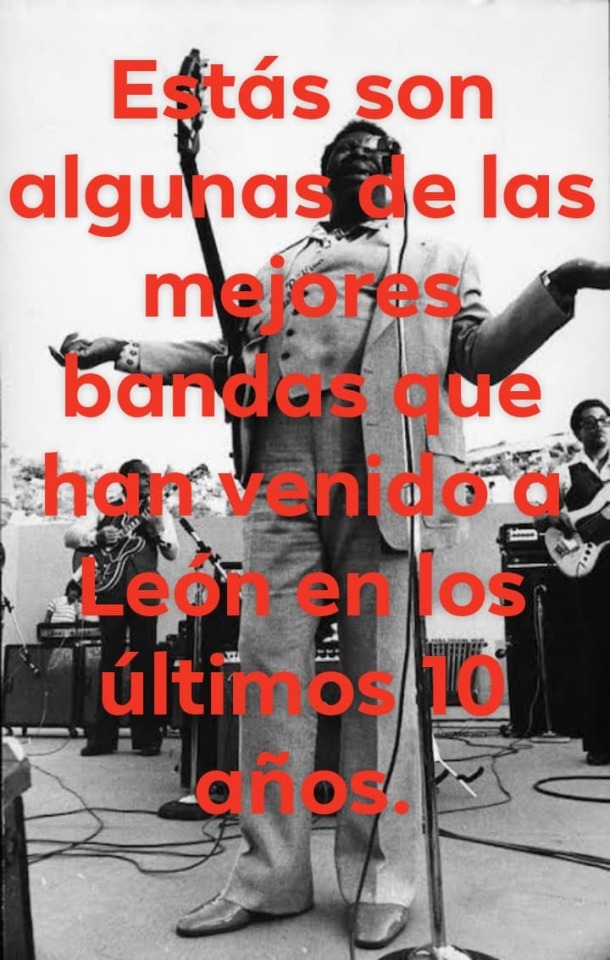
Estas son las mejores propuestas nacionales e internacionales, que han visitado León y los alrededores en los últimos 10 años (1° parte);
festivales, bares y foros que han pasado a la historia y otros, que siguen abiertos en la actualidad.

Hace una década me dieron mi credencial de elector y con ella; el pase de admisión a los mejores gigs en diferentes bares de la ciudad. Yo me centraba en el flujo de rock, punk, new wave, garage, indie, alternativo y house que bajaba del norte. Esa pequeña corriente sabor a cielo que se reforzaba cada vez más, gracias al incremento de tecnología. La invasión inglesa traspaso fronteras y me despertó curiosidad por escuchar más música en español e inglés.

Incluso, desde antes de los 18 años, ya me juntaba con inmorales en fiestas amenizadas por puras joyitas musicales. Recorrer las calles en búsqueda del soundtrack más adecuado para tu vida, le daba sentido a la misma. Zarpar en búsqueda de la mejor experiencia musical, era la tarea más importante que había entonces.

Para refrescar la memoria; recuerdo que mi padre me contó la historia de cuando tuvo la oportunidad de ver a B.B. King en la ciudad de Guanajuato. La leyenda tocó en el estadio de baseball de Pastita en la histórica sexta edición del Festival Internacional Cervantino de 1978. A lo que nos lleva a recordar la octava edición del mismo festival en 1980. Pues era la visita del también artista reconocido: Ray Charles; considerado “uno de los 100 más grandiosos artistas de todos los tiempos” según Rolling Stone. También, recuerdo que cuando vivía en Guanajuato capital; me platicaron que en 1994 Radiohead, paseó por la ciudad en fechas cervantinas sin ser parte oficial del festival. Aunque ninguna de estas historias me pertenece, me hacen sentir más motivado a recordar.
Quiero hablarles del 25 de agosto del 2011; un día antes de mis 20 primaveras. Evento al que fui con mis amigos al extinto Pub Monaghan para ver a Thieves Like Us (banda con referencias retro y ritmos post-punk en synth-pop) Excelente regalo de cumpleaños. Los integrantes, humildemente bajaron a tomarse fotos con el público. 6 Años después; 4 de junio de 2017 volverían a Hammer Soul.
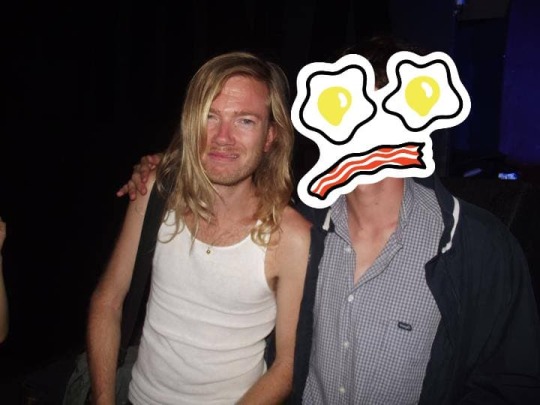
(Pontus Berghe, baterista de Thieves like us y yo en Pub- Monaghan, León, Gto. 2011 :))
En 2013; un accidente me dejó en cama por meses. Fue inevitable perderme a Man Or Astroman en el centro de León. Del 29 de agosto al 9 de septiembre, se llevaba a cabo el XVIII Festival Internacional de Arte Contemporáneo (FIAC) frente a la casa de la cultura. El cuarteto de surf-punk espacial compartía escenario con Rebel Cats, Sr. Bikini y Los Mustang 66.

(Man or astroman primera vez en México. Esta foto le pertenece al Instituto Cultural de León) En el Festival Duro que se llevó acabó el 08 de marzo del 2014. En las instalaciones de la feria. Pudimos disfrutar de la presentación estelar del Reverend Beatman y The Monsters; blues, punk, new wave, folk y rock & roll.
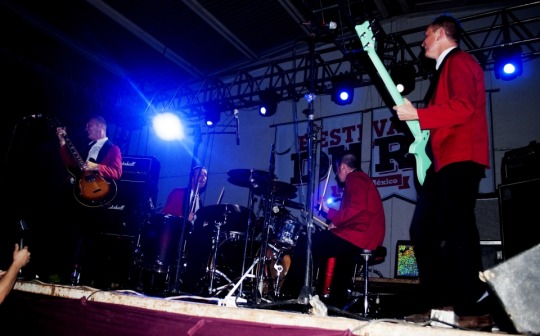
(Foto de Ana Muñiz: the Monsters y el Reverend Beat-Man en León)
El 28 de octubre del 2016: The Schizophonics visitaba nuestra ciudad. La pareja de San Diego, California; Pat Beers (Guitarra) y Lety Beers (Bateria). Tocaron en uno de los foros que ha desaparecido con el tiempo, y promovieron la mejor combinación de Rock y Fuzz. El 18 de noviembre del 2016: Se anunció la asistencia de la orquesta cubana; Buena Vista Social Club en el Festival del Globo. Noticia exagerada porqué solo fue la tecladista esa noche. Recientemente se presentaron gratis en San Miguel de Allende el pasado 08 de marzo del 2020.

(Buena Vista Social Club en SMA. Foto de https://cobertura360.mx/)
Los Peyotes vinieron a nuestra ciudad el 1 de diciembre del 2016. En la calle Pedro Moreno #529. Entre las calles Zaragoza y Libertad. Esta es la banda que revivió el garage revival de Sudamérica. Con mucho flujo freakbeat y toques de a go go, completan una de las mejores propuestas del garage hispano a nivel mundial. La banda insignia del ska y reagge: The Skatalites. Frecuentaron el estado de Gto desde el 2013. Aunque la última vez que pisaron tierras guanajuatenses fue el 17 de noviembre del 2019 y celebraron su °55 aniversario en el Bar Nandas de Guanajuato capital. Y sí hablamos de ska, porque no recordar la visita de una propuesta muy importante del género en México; Salón Victoria al Abbey Road Bar el 21 de mayo del 2015. Masser Chups el 17 de febrero del 2017 se presentó en el Rolling House; banda de Rusia, San Petersburgo con sonido surf, rockabilly y horror punk.

(Esta foto le pertenece al Instituto Cultural de León. Masser Chups en León)
En el Festival Visceral organizado por Factory House, la noche del 25 de febrero del 2017 y las bandas estelares eran; Has a Shadow (garage psych) y OCEANSS (Deep-Noise) de CDMX. En previos eventos; el concepto móvil Factory House, había encontrado su camino desde la primera sede, donde comenzó el movimiento. En aquellas madrugadas de brujas en el Sabbath, cuando algunos miembros de The Wookies, llegaron sin mascaras a un after en la sede original de la Factory a principios del 2013. Continuando con el flujo electrónico del after: Cabe mencionar la noche de principios del año 2019, nos visitó Friso de Adana Twins el 5 de enero. Además, el 29 de julio del 2019; MACHINO, desde Tijuana asistiría al Bar El Taller en el centro de la ciudad de León. También es importante mencionar la noche del 7 de noviembre; Purple Disco Machine en The Normal.
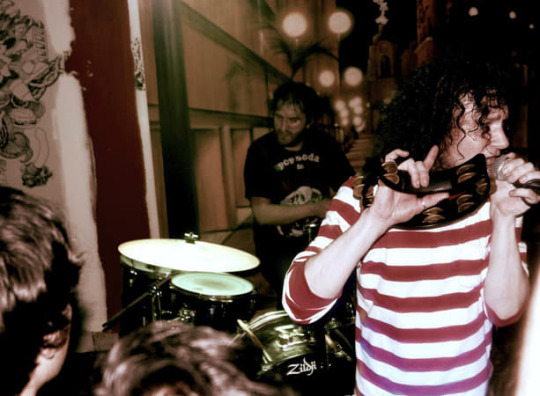
(foto por Esteban Cisneros: The Cynics en Jaibol) El Bar Jaibol siempre ha figurado como uno de los lugares más populares de zona centro en la ciudad de León, Gto. Con ambiente alternativo y 100% familiar. En sus principios, alrededor del 2012 o 2013. Estaban más enfocados en el público juvenil, y el Jaibol era el punto de referencia para la banda rocanrolera de diferentes géneros. El sábado 8 de marzo del 2014 optaron por darle cuerda a la juventud alocada que frecuentaba el bar, con la presentación de The Voodo y The Cynics; el mejor garage-revival de todos los tiempos. Un par de años más adelante: El 15 de abril del 2016; The Gore Gore Girls. Luego, el 10 de junio del 2016; The Fleshtones y Wau y Los Arrrghs!!! visitaron el Jaibol para recordarnos la época dorada del garage revival en León, gracias al Jaibol.

(Amanecimos con Build A Vista) Al rededor del 2013-2016 se empezó a encontrar la decadencia urbana que tanto me gusta en el Bar El Callejón. El poder psicodélico de Build a Vista se apoderaba de este lugar; el 8 de septiembre del 2018 y de nuevo, el 6 de agosto del 2019. El escenario era de El Muerto de Tijuana, el 29 de septiembre del 2018. Seguimos con El Cómodo Silencio De Los Que Hablan Poco; presentes el 28 de octubre del 2018; banda chilena experta en canciones emotivas, pasajes instrumentales y un permanente espíritu juvenil. Las Pipas de la Paz destrozaron el escenario el 9 de febrero del 2019. También, acompañaron a Los Nastys el 22 de mayo del 2019. Garage punk mexicano y garage revival español; reunidos por primera vez en León.

(Foto: Por Marcos Martines [CUBO] de izquierda a derecha: Omar Montalvo [LosNasty], Rulo Pipas [LasPipasDeLaPaz], Luis y Fran Basilo [LosNastys], Jasmina Hirshl [LosHoneyRockets, MonkeyBeeRecords] y Miguel Servin [Carrion Kids, MonkeyBee Records] .)
El 15 de febrero del 2019; venía O-Tortuga con la potencia capitalina. Luego, el 7 de marzo del 2019 desde Noruega nos visitaba la vanguardia en música experimental; MoE. Un mes adelante, Juan Wauters nos agendaba una fecha para “La Onda de Juan Pablo Tour” el 15 de mayo del 2019. La dinastía de The Froys nos citaron en el Callejón el 29 de junio del 2019. El último día de agosto, tuvimos una noche fuzztástica con la visita de los matemáticos de Mengers. Y, para terminar; tuvimos la visita de El Shirota (01/Nov/19) con una versatilidad envidiable sobre el escenario. Implementando un toque experimental y psicodélico impresionante.
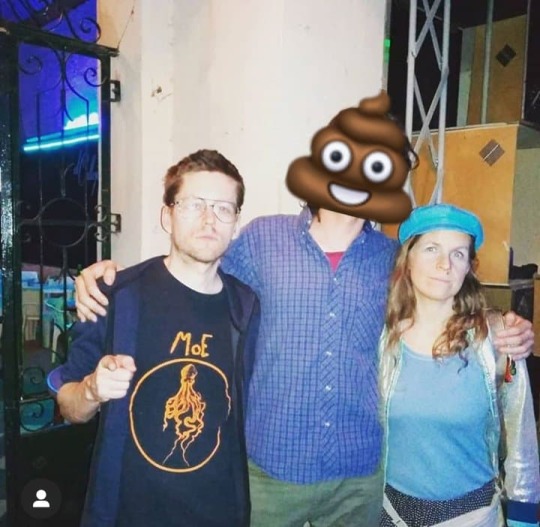
(Con MoE en el Bar El Callejón.)
Para despedirnos les voy a hablar de un lugar, que en 2017 tuve la oportunidad de ver a una de mis bandas favoritas: Maybach Concert Hall. Desde entonces lo he considerado como un foro muy importante para la ciudad de León.
Como les iba diciendo; el 19 de mayo del 2017, asistí a San Pedro el Cortez y Belafonte Sensacional cumpliendo fechas del Tour Circuito Indio. Dos propuestas que me han acompañado hasta el amanecer. Continuamos con Hong Kong Blood Opera el 1 de julio del 2017; elevando revoluciones con sus teclados punkys. Seguimos con Los Master Plus y Sabino el 20 de julio del 2017. Terminamos con el indie de Triángulo de Amor Bizarro, presentándose el 9 de septiembre del 2017.
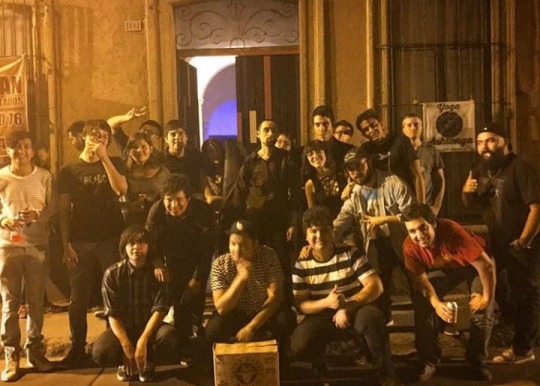
(Con San Pedro el Cortez antes del concierto en León, Gto. 2017.) A continuación, como mención honorifica enlistaremos las bandas de cada festival en el estado de Guanajuato.
Festival Latido 2018: Devendra Banhart, Porter, Camilo Séptimo, Jessy Lanza, Hello Seahorse, Los Blenders, Girl Ultra, etc.
Festival Latido 2019: Alemán, Empress Of, El Mató a un Policía Motorizado, REYNO, Juan Son, Carlos Sadness, Kinder Malo, Ed Maverick, Señor Kino, Sailor Fag, Midnight Generation y 1915 entre otros.
Tecate Bajío 2018: Caifanes, Zoe, Capital Cities, DLD, Claxons, Enjambre, División Minúscula, El Gran silencio y Armando Palomas.
Tecate Bajío 2019: Café Tacvba, Danny Ocean, Devendra Banhart, Efelante, Juanes, Julia Michaels, La Garfield, Los Amigos Invisibles, Los Auténticos Decadentes, Odisseo, Porter, Sabino, Solovino, Tino El Pingüino y Warpaint.
Corona Music Fest 2009: Jaguares, Kinky y Zoe.
Corona Music Fest 2010: Los Bunkers, Kinky, Babasónicos, Panteón Rococó, Maldita Vecindad.
Corona Music Fest 2011: Molotov, Fobia, Los Amigos Invisibles, Jumbo, Sussie 4 y Los Daniels.
Corona Music Fest 2013: Panteón Rococó, Inspector, Division Minuscula, DLD y Liquits, Victimas del doctor cerebro, Los estrambóticos, la Cuca.
Corona Music Fest 2014: Café Tacvba, Molotov, Los Ángeles Azules, la Cuca, Kinky, Fobia, Zurdok, Los Amigos Invisibles, Los Pericos, Inspector, DLD, Sussie 4, Jumbo, Los Bunkers, La gusana ciega, Hello Seahorse, Los Daniels, Victimas del doctor cerebro, Lance Herbstrong, Bóxer.
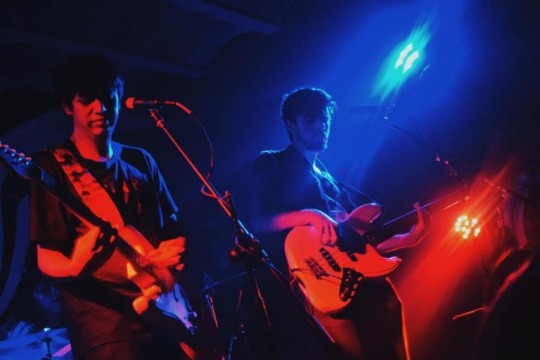
(foto por CUBO: Mengers en el Bar El Callejón.)
Estos fueron algunos gigs que hemos tenido en la ciudad. Esperamos que vengan más bandas a nuestra ciudad en crecimiento. Ya es hora de hacer crecer el flujo de música. En la actualidad, apoyamos a los artistas independientes para salir gloriosos del underground. También, estoy seguro que pase por alto muchas propuestas interesantes que deberían estar en esta lista. No me gustaría que se mal interpretara mi intención. Escríbenos y lo mencionaremos en la segunda parte. Gracias :)
youtube
(Man or Astroman por primera vez en México.)
Por @EdiSong_ ****************************************************************************************************************************************************************************************************************************************************************************************************************************************************************************************************************************************************************************************************************************************************************** *************************************************************************************************************************************************************************************************************************************************************************************************************************************************************************************************************************************************************************************************************************************************************************************************************************************************************************************************************************************************************************************************************************************************************************************************************************************************************************************************************************************************************************************************************************************************************************************************************************************************************************************************************************************************************************************************************************************************************************************************************************************************************************************************************************************************************************************************************************************************************************************************
#gigs#gto#rock#música#alternative#fuzz#mengers#build a vista#san pedro el cortez#el callejón#garage#revival#the cynics#the voodos#el comodo silencio de los que hablan poco#thieves like us#las pipas de la paz#los nastys#etc
4 notes
·
View notes
Photo

“Rolling Thunder” excerpted from Signals: a performance memoir
Featured May 2020 on Unfictional https://www.kcrw.com/culture/shows/unfictional
I wasn't a bastard but I still felt kind of illegitimate. Dad and Mom had eloped, three months after meeting. My sisters from Mom’s first marriage loved him like mad, but then one day Dad vanished, before I could form a single memory of him.
I've always wondered why that day was the finale. How do you walk away from a beaming little two-year-old face, one that looks like you? I was there, but unaware. I want the scene.
My sisters say: Dad was great.
Mom says: All you need to know is he walked away.
Dad said: Mom kicked him out that day, that he crammed his suits and stereo into the Mustang and rushed to the city for a meeting, paying a kid twenty bucks to guard the car, which was empty anyway when he came back out.
Later, once I knew him, I asked: “Was there another woman?”
His answer: “There must have been.”
THEY BLAMED IT ALL ON ALCOHOL.
Mom said: infidelity wasn't the only problem; unofficial-seeming “bill collectors” were showing up at the house.
My sisters said: Dad made life fun, played the piano, adored Mom. But skillets and invectives would fly in the night...and then Dad went missing, with hundreds of thousands of some investor’s dollars.
By the time my sisters were 8, 10 and 11, they had lost two fathers.
Mom hadn’t worked since modeling before her first marriage. She borrowed tuition for a full-time secretarial course and sent me to stay with her brother, another charming alcoholic with money problems and a fed-up wife. Mom and the girls stayed behind, in the lovely house on Manor Lane.
I rejoined them fifteen months and few blocks but a world away, in a garden apartment behind the Country Club. Mom kept the crystal chandelier and her gown from the Kennedy Inaugural, and a suite of heavy furniture that wasn’t made for small rooms.
Sometime later, Dad called Mom for a friendly chat. He was glad to hear she was in love and admitted that he and his girlfriend had a baby. He asked her to sign some papers for a Tijuana divorce. Sure, Mom said, and I’ll take the trip too. She came back with castanets and a tan. I remember understanding that my parents would never get back together.
I had Dad's nose and hair and musicality, but couldn’t remember a thing about him. Mom said I was lucky I didn't know what I was missing. The older girls talked about their happy chapter with my dad all the time, but I’d wait alone out front for the Mustang that didn't come.
One day, though, he showed, and this was my own first memory of Dad: Christmastime, Chinatown, and three wrapped presents: a Dancerina doll, a Polaroid Swinger, and a camel hair coat from Saks. The surviving Polaroids show a serious dad and a manically happy me.
Dad promised that now he was going to bring all his kids together regularly. He'd repeat this song on our scattershot dates over the years, but that visit WAS the beginning, of our intermittent, fond, indulgent, dishonest bond. After that, I lived in obsessive anticipation of the next visit, never knowing when it would be.
(Band in)
A Dancerina doll, a Polaroid Swinger, and a camel hair coat from Saks. Dad gave me these, and went back to wherever he went.
During Kindergarten: I roomed with Mom, but she was out most nights. The big girls had the other bedroom. I wasn’t allowed in, but from the other side of the door I’d smell and listen attentively. Incense, patchouli, cigarettes, maybe pot? Talking, laughing, singing Joni Mitchell, CSNY...yelling, hitting, screaming, cursing. I swear I could hear the brushing of their long tresses, the swinging of their unhindered double-D breasts...meanwhile people kept mistaking me for a boy.
“You have your father’s thin hair,” Mom complained, so she took me to the barber on the corner, who gave me a buzz cut... and rationalized it this way: “It don't matta if she looks bad now; it mattas what she looks like when she's 18.” Mom thought this was a riot. There was none of this “you're beautiful because you're you” bullshit with Mom. You either looked good, or you didn't.
THERE IN THE CATHODE LIGHT, NOBODY BEAMED UP BRIGHT ENOUGH FOR HER TO LIKE NOONE TO WALK BESIDE
YEAH, YOU HARDLY KNEW US
THAT WAS JUST OUR LIFE/THAT WAS JUST OUR LIFE
Then, In first grade we moved to Carol Avenue, and I almost had another sister!
Jeanne! Jeanne! Jeanne! Jeanne!....Jeanne!
We had a great time together.
MOM MET HER FATHER AT THE GIANT STEP
A PIANO BAR IN NEW ROCHELLE
SHE'D GOT MY DEADBEAT DAD THE GIG,
AND HE SHOWED UP
WENT DOWN SO SHE COULD GRAB THE TIPS,
AND LET ADMIRERS BUY HER DRINKS
LED BY THE VERY HANDSOME ED DESONNE
Mom was passionate and needed a rescue; Ed DeSonne was a prosperous investment banker. Both were raising broods of four alone. Ed wasn’t divorced yet, but soon he and Mom got engaged, and we were going to be like the Brady Bunch, with martinis. In the meantime, he was paying the rent on our roomy townhouse on Carol Avenue...
YEAH, IT'S NEVER SIMPLE
BUT WE'LL GIVE IT A TRY; MAYBE BE ALRIGHT
Jeanne too was the youngest of four. She was fearless and funny, and once the parents were married, she would be my roommate. But until then, I had to spend a few more nights with one or another of my unwilling sisters. One such Saturday, Knockout Diane was supposed to watch me while Shy Karen sister went to a party, but Diane sneaked out. Karen wailed, but Mom had plans with Ed, who arrived in a cloud of aftershave and tapped his shiny toe in the foyer. Mom appeared in glamorous good cheer and ordered me to kiss him. I didn't wanna.
“Go ahead: give him a little kiss,” Mom said, and Ed reached out gamely, but I wound back and fired a fierce little first-grade kick right into his suited shin.
Today we'd say I was “acting out.” But back then, everybody just yelled. Then the grownups... went out. And the television...went on. And then: Ed DeSonne disappeared, changing the channel on a whole other level.
ED, WE HARDLY KNEW YE…
In first grade you learn to add 2 plus 2. I overheard the word “funeral” and didn’t see Jeanne’s dad for a week; these factors equalled --to me-- that he was dead. When Mom announced it, the big girls wailed like the world was ending. But I just said: “I know.”
I wasn't glad Ed was dead, but I wasn't sad, either. I didn't know how much we lost.
Mom told everyone the aneurysm happened while Ed was driving; years later she told me the rest of the story. She also told me that, in her grief, she'd called MY DAD, as a friend, and that he'd sneaked away to be there with her at Ed's funeral.
In the instant it takes for a blood vessel to pop, Mom became bereft, unemployed, and homeless. And our family dispersed like seeds in the wind.
Diane went to live with her father in the city. The rest of us were taken in by another divorcee with a sun-porch we shared for the nervous, chilly months it took Mom to save up a security deposit. Karen cried endlessly, Mom cooing in her ear and breaking Valiums in half. Fightin’ Joni moved in with her best friend. I got caught standing on our hosts’ kitchen counter in my loafers, stealing cookies from their Charles Chips tin.
But worst of all, Jeanne was sent into foster care.
I only saw her once again after that, but we’re Facebook friends now.
While we were staying with the other family, Dad got tickets for the TV show "Wonderama", for me and our host's daughter, and she won the big prize! Our moms picked us up, tipsy on high heels, loading the prizes in the back of a Checker, ignoring candy-starved Moonies in white shirts and dark blazers who tried to sell us carnations.
(BEAT, then energy back down)
Mom found an apartment. It was in Tuckahoe, so we switched schools. I was in 2nd grade; Joni, 7th; Karen, 9th. I got sent to the principal's office for wearing pants; he showed me a paddle, said next time he'd use it. But maybe it wasn't just the trousers.
Men landed on the moon. “Evil Ways” was in heavy rotation. And “Spinning Wheel.” Our apartment sat at a dead end by a highway. At night the passing cars projected an abstract slide show on our bedroom wall. In the living room, Mom would light a candle and drink wine. The apartment often smelled of the burned bottom of a saucepan.
That Christmas Eve, Mom fell asleep and the candles burned all the way down, through the tablecloth, and into the nice oak table. I woke up when the fire department arrived.
YEAH, WE HARDLY KNEW YOU//IT WAS JUST OUR LIFE/THAT WAS JUST OUR LIFE
Karen was 15 and wanted privacy; I was seven and wanted company. One day these opposing desires clashed at a bedroom door, both sides pushing until the big kid won, my middle finger slammed in the door jamb.
The top was hacked completely off. Mom raced me to New Rochelle Hospital, where the surgeon told her to retrieve the tip of my finger or I'd have a stump for the rest of my life. Meanwhile, back at the apartment, Karen tried to flush my finger, along with her shame and horror, down the toilet.
Thanks to low-rent plumbing, my fingertip didn't disappear, and the toilet water even kept it alive. Mom carried it in a baggie back to the surgeon, who successfully reattached it. (Now, there’s a parent's errand.) They kept me in the hospital for a week, because I was hyperactive and the doctor feared I'd bang the stitches open.
It's possible I was on painkillers, because when Dad appeared he was like a dream, swinging down the hall with his great suit and smiling blue eyes. He'd stopped at the gift shop, and gotten me a dozen long stemmed American Beauty roses and a music box. When you opened it, a ballerina pirouetted to this song:
OH, WHAT A BEAUTIFUL MORNING/ OH, WHAT A BEAUTIFUL DAY/I'VE GOT A BEAUTIFUL FEELING/EVERYTHING'S GOING MY WAY
The roses died, of course. I kept that box, though, long after the ballerina broke off and the inside felt was smutty with lipgloss and melted JollyRanchers. Didn’t see Dad again for another 4 years..
1 note
·
View note
